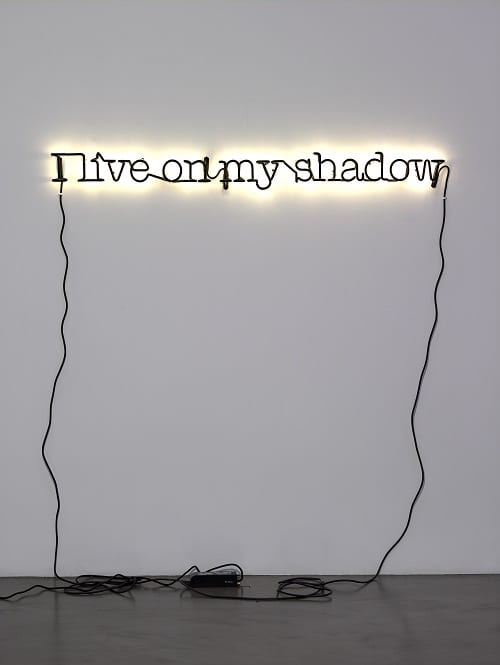The NSU Art Museum will celebrate Black History Month on Feb. 7 with free admission from 4 – 8 p.m. and drop-in art workshops based on art of the African Diaspora in its “Remember to React” exhibit. The free admission is a monthly occurrence under the art museum’s Starry Night program, which works to open the community to art culture. Children ages 3 – 5 are invited to make mixed media masks while teen and adults can make a word art piece inspired by that of African-American conceptual artist Glenn Ligon.
According to education curator Sebastian Perez, the traditional African art collection was one of the museum’s first collections after it was fully accredited by the American Accreditation of Museums in 1974. Pieces in the collection go back as far as 1860 and continue in to the mid 20th century. Around this time, western artists such as Picasso and Matisse began to appropriate African art: Perez said these artists saw the abstractness of the art as forward-thinking and in tune with changes going on in Western society. They saw the industrial revolution as “a perfect opportunity to reflect on humans.”
Within the museum’s manifold mixed-media African art collection, Perez pointed out an underlying theme of re-appropriation and identity. That is, many of the pieces featured in “Remember to React” are a response to the obstruction and convolution of black bodies in art history. As an example, Perez discussed Mickalene Thomas’s “Portrait of Mama Bush I, 2010” as a reaction to Edouard Manet’s “Olympia” which depicts a white woman reclining nude with her maid who is a black woman in the background. Perez said Manet depicted her so dark that she blends in with the background. Thomas’s piece captures her mother reclining on a sofa with exposed breasts, but it’s more than a portrait: “it brings up the white male gaze and the appropriation of identity,” said Perez. In a similar vein, Zanela Muholi, a south African photographer who identifies as intersex, uses their photography to challenge the white-washed magazine covers they became accustomed to in post-apartheid south Africa. Perez said Muholi’s portraiture aims to both “connect the art history of portraiture but also [to incorporate] a new wave of history [where black artists] incorporate identify in their work.” Additionally, Perez’s work beings exposure to LGBTQ topics that warrant discussion in South Africa.
The collection also features Purvis Young, an African-American artist who grew up in Overtown in Miami when I-95 construction displaced residents to make room for the road. With no formal art education, Young was self-taught after being imprisoned for a misdemeanor. During this time, he began making art, and he read multiple art history books which influenced his methods. Young spent a good portion of his life homeless, and he crafted much of his art through found and recycled materials, even using the head of a baby crib to paint on. Perez called his expressionist and said “his simple dots and lines are electric.”
More than that, the museum has a spite-specific piece designed by south African artist Serge Nitegeka, fitting a curved wall and made of paint and wood. It also features a video work of Onajide de Shabaka’s called “Total Disappearance, 1905,” which speak to south Florida by narrating a story over moving waters.
As for the workshop inspired by Glenn Ligon, the museum displays a neon, glass and paint piece of his work that spells out “I live on my shadow,” which Perez said refers to “the shadow that has been cast over the African-American community and the shadow that has been cast over his life.”
Attending Starry Nights offers opportunity to further explore these artists and see the art for yourself. For those who want to know more details about African-American and African artists featured in “Remember to React,” the museum offers tour scheduling at nsuartmuseum.org/educationresources/#schedulingtour, and offers short gallery tours Fridays and Saturdays from 2-3 p.m.


